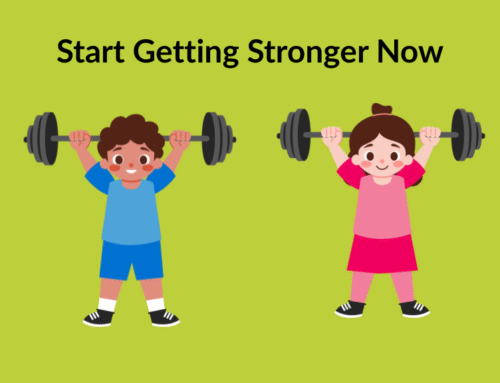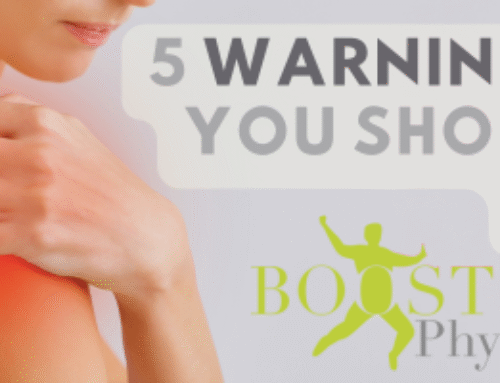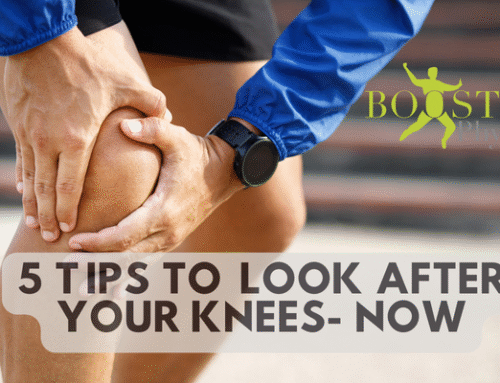Shoulder injuries and pain are very common and can be debilitating. Taking 3 steps can help you prevent shoulder injury or pain.

Here are three effective ways to help prevent shoulder injuries:
1. Improving Flexibility and Range of Motion
Regularly stretching and maintaining flexibility in the shoulder can reduce stiffness and improve mobility, which in turn can prevent injuries. Dynamic warm-ups and specific stretches, such as shoulder circles and cross-arm stretches, can enhance range of motion and prepare the shoulders for physical activity.
2. Strengthening Shoulder Muscles
Focusing on exercises that strengthen the muscles around the shoulder joint, such as the rotator cuff muscles and scapular stabilizers, can provide stability and support. Exercises like external rotations, shoulder presses, and rows help build strength and resilience in the shoulder area.
3. Practicing Proper Technique and Posture
Whether in sports or daily activities, maintaining proper form when lifting, throwing, or reaching is critical. Avoiding overuse and improper lifting techniques, along with good posture during work or exercise, can prevent excessive strain on the shoulders and reduce the risk of injury.

Why Advanced Shoulder Stretching Can Be Helpful:
- Injury Prevention: For people regularly engaging in overhead movements (e.g., weightlifting, swimming, builders), advanced shoulder stretching can reduce muscle tightness and imbalances.
- Enhanced Flexibility: Advanced shoulder stretches help improve shoulder joint flexibility, which can be important for athletes, dancers, or individuals involved in activities requiring a wide range of motion.
- Injury Recovery: After shoulder injuries, advanced stretching exercises, under supervision, can help regain full mobility.
- Improved Posture: Advanced shoulder stretches can help poor posture caused by rounded shoulders from prolonged sitting, relieving tension in the upper back and shoulders.
These advanced exercises demonstrated are not suitable for everyone. If you wish to prevent shoulder problems, see one of our musculoskeletal specialists who can help you.

6 common reasons for stiff shoulders
- Frozen Shoulder (Adhesive Capsulitis): This condition causes the shoulder joint to become stiff and painful, with a gradual loss of motion. It often occurs after injury or prolonged immobility.
- Rotator Cuff Injury: Tears or inflammation in the rotator cuff muscles can limit shoulder movement, leading to stiffness, pain, and weakness.
- Arthritis: Osteoarthritis or rheumatoid arthritis in the shoulder joint can cause stiffness due to the wearing down of cartilage or inflammation of the joint lining.
- Poor Posture: Hunching over or slouching for extended periods can lead to muscle imbalances and tension around the shoulder, causing stiffness.
- Muscle Strain: Overuse, heavy lifting, or sudden awkward movements can strain the shoulder muscles, leading to pain and stiffness, particularly in the upper back and shoulder area.
- Calcific Tendinitis: Calcium deposits build up in the tendons of your shoulder, particularly the rotator cuff tendons. This can cause EXTREME pain and stiffness in the shoulder.
Each of these causes may have different treatment approaches, ranging from hands on physio treatments including myofascial release, joint mobilisations, PNF stretches and exercises.
We love using a variety of techniques to help our patients with shoulder problems. Here are common treatment techniques we use:
1. Joint Mobilization
This manual therapy technique involves the physiotherapist using their hands to apply controlled pressure and movements to the shoulder joint. The goal is to increase the joint’s mobility by gently moving it through various ranges of motion, loosening tight structures around the joint.
2. Soft Tissue Myofascial Release
We use specific techniques to relieve tension in the muscles surrounding the shoulder, such as the rotator cuff muscles, deltoids, and trapezius. We release myofascial trigger points that can limit movement of the shoulder.
3. Stretching Exercises
Physiotherapists guide patients through targeted stretching exercises to improve flexibility and gradually increase the range of motion.
4. Strengthening Exercises
Strengthening the muscles around the shoulder, especially the rotator cuff and scapular muscles, helps stabilize the joint and improves overall shoulder function. Common exercises include:
- Resistance band exercises to strengthen the rotator cuff.
- Isometric shoulder exercises to build strength without overstretching the joint.
5. Acupuncture and Dry Needling
We use needling to release areas of tension and restriction to improve mobility in the shoulder and to reduce pain in the area that may be limiting mobility.


BOOST PHYSIO guarantees your best recovery. We create tailored physiotherapy treatment to our patients individual injury or problem to help them make a quick and full recovery. We love helping people get back to doing the things they love to do. BOOST PHYSIO is a chain of 9 physiotherapy clinics across NW London.
We provide expdert physiotherapy for muscle and joint injuries at our branches in: Mill Hill NW7, Elstree WD6, Swiss Cottage NW3, Hampstead NW3, Hendon NW4, East Finchley N2, Muswell Hill N10, Borehamwood WD6 and Kensington High Street W8. We love helping people achieve their recovery and rehabilitation goals through our expert physiotherapy that is customised to their exact needs.
Why wait? We can help you today with physiotherapy treatment. Our expert private physiotherapists specialise in helping people with sports injuries, neck and back pain, knee issues, mobility difficulties and after surgery (such as ACL reconstructions and knee replacements Appointments available from 8am to 9pm, including weekends. We even offer emergency physiotherapy sessions on Saturdays and Sundays, ensuring timely care when you need it most.
We love providing physiotherapy to people from: North London and North West London. Areas we cover include: Hendon NW4, Mill Hill NW7, Cricklewood NW2, Hampstead NW3, Belsize Park NW3, Kilburn NW6, Queens Park, Finchley Road, Golders Green NW11, Swiss Cottage, Willesden Green NW10, Fortis Green, Crouch End, Muswell Hill N10, Southgate, Wood Green N22 and Highgate N6.
At our Elstree and Borehamwood WD6 physio clinic, we extend physiotherapy treatment to residents of Elstree, Borehamwood, Stanmore HA7, Edgware HA8, Bushey WD23, Radlett WD23, and Aldenham.
Don’t let pain stop you- get it sorted today. Make an appointment today at one of our 9 High Street Physiotherapy clinics.







